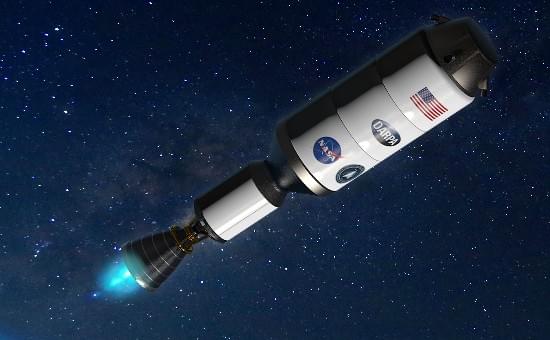The seemingly basic question of “which genes are important for the heart?” spurred Ramialison and her team to pursue a fuller picture.
A novel atlas reveals region-specific links between structural, mechanical, and genetic properties within the heart.
Have you heard of the E1 World Electric Powerboat Series? It’s the Formula 1 for race boats and it boasts some pretty powerful models.
The E1 series will essentially be an electrified version of the F1H20 powerboat racing series and will utilize a hydrofoil design for its boats, allowing them to be lifted some 16 in (40 cm) over the water’s surface.
Now, one of the boasts called the RaceBird made to compete in the race has finally been tested and it performed even better than expected, according to a statement published by E1 on Monday.
Over the last several months, we’ve been enjoying a front-row seat as [Jay Bowles] of Plasma Channel has been developing and perfecting his design for a high voltage multi-stage ionic thruster. With each installment, the unit has become smaller, lighter, and more powerful. Which is important, as the ultimate goal is to power an RC aircraft with them.
There’s still plenty of work to be done before [Jay] will be able to take his creation skyward, but he’s making all the right moves. As a step towards his goal, he recently teamed up with [RcTestFlight] to attach a pair of his thrusters — which have again been further tweaked and refined since we last saw them — to a custom catamaran hull. The result is a futuristic craft that skims across the water with no moving parts and no noise…if you don’t count the occasional stray arc from the 40,000 volts screaming through its experimental thrusters, anyway.
We were particularly impressed to see the boat doesn’t use rudders, and instead relies on differential thrust between the two ion engines to turn. It was the more difficult approach to be sure, but as [Jay] explained it to us, the goal from the very start was to completely eliminate any moving components from the powertrain.
Specifically, the researchers examined how THC administered through edibles, a common consumption method, influenced epigenetic changes in crucial areas for fetal development, including the placenta, fetal lung, brain, and heart.
In recent years, the popularity and availability of cannabis has grown significantly, with various consumption methods like edibles gaining traction. However, alongside this trend, there has been a worrisome increase in cannabis use among pregnant women. Unfortunately, our understanding of the detailed effects of using cannabis during pregnancy on the developing child remains limited. Because normal fetal development relies on the crucial process of epigenetic regulation and gene expression modification, it has been suggested that studying the molecular changes linked to cannabis exposure during pregnancy could provide important insights.
To gain a better understanding of the effects of cannabis use during pregnancy, researchers from the Oregon Health & Science University (OHSU) conducted a unique preclinical study that focused on investigating the epigenetic impact of THC, the main active component in cannabis, on fetal development and future health outcomes. The study’s findings were published in the journal Clinical Epigenetics.
With the increasing prevalence of cannabis use, there is a common perception that it is safe. As a result, more pregnant women are turning to cannabis, particularly during the first trimester, to relieve symptoms like morning sickness. However, early pregnancy is a critical time when the developing fetus is most susceptible to environmental factors.
DRACO is a demonstrate prototype of a nuclear-powered rocket that is scheduled for launch in 2027.
Is X, the Wechat for the rest of us?
After a sudden rebrand, Twitter is now called X. This new name was previously discussed by Elon Musk, who strongly associates the “X” brand with Twitter’s future as an “everything” app. But what is an “everything” app, and how will X become one?
We often believe computers are more efficient than humans. After all, computers can complete a complex math equation in a moment and can also recall the name of that one actor we keep forgetting. However, human brains can process complicated layers of information quickly, accurately, and with almost no energy input: recognizing a face after only seeing it once or instantly knowing the difference between a mountain and the ocean.
These simple human tasks require enormous processing and energy input from computers, and even then, with varying degrees of accuracy.
Creating brain-like computers with minimal energy requirements would revolutionize nearly every aspect of modern life. Quantum Materials for Energy Efficient Neuromorphic Computing (Q-MEEN-C)—a nationwide consortium led by the University of California San Diego—has been at the forefront of this research.









